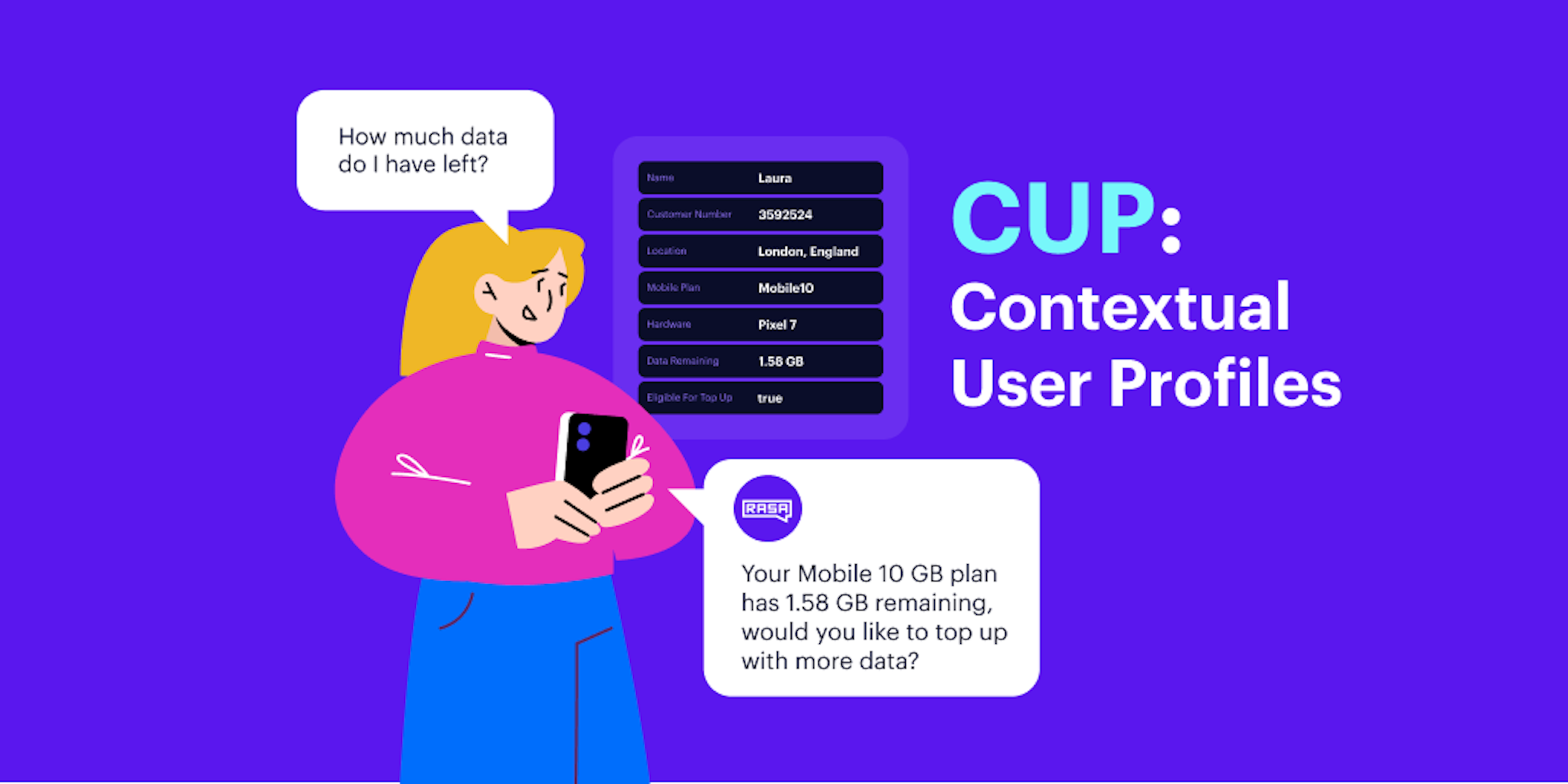August 31st, 2022
Designing Enterprise Conversational AI with Contextual Profiles
Eric Kontargyris
We would like to introduce a new blog series, “Designing Conversational AI for the Enterprise”, where Rasas across our organization introduce key insights and learnings from their experiences in the field. For our first blog in the series, Eric, a principal solutions engineer, shares his insights on the value of personalized customer experiences in conversational AI projects.
As brands increasingly say goodbye to FAQ and rules-based chatbots in favor of conversational digital assistants capable of engaging with customers in a human-like manner, it’s time to embrace personalization as part of your digital assistant strategy.
Approaching customers with a “one-size-fits-all” strategy is a natural entry point into conversational AI. Afterall, there is associated risk with automating support or call center tasks with a digital assistant that is powerful enough to make changes to accounts and perform transactions.
Historically, customers have had less than favorable opinions about chatbots. User sentiment is positively shifting as improvements in natural language understanding, utility, and empathy create more meaningful conversations.
Now let’s consider the next phase: personalization. Brands have all the information they need. With some extra code and a little creativity, one can shed “one-size-fits-all” for a tailored experience.
Meet the Contextual User Profile
When a user interacts with a digital assistant, the brand has the opportunity to associate metadata with that customer and use this information to influence the conversation. Here at Rasa, we refer to this as a Contextual User Profile (CUP). The CUP is the missing link between a generic and a personalized experience.
What is a Contextual User Profile? This can be any information a brand knows about the customer that can be used to influence conversation utterances from the digital assistant. The digital assistant should remember you and treat you to a dynamic conversation just as a human would.
Some examples of CUP metadata:
- Account information: nickname, date of birth
- Preferences: window seat, vegetarian meal
- Products: savings account, home loan
- Bookings: flight and hotel reservations
- Customer Status Level: frequent flier, platinum elite status
- Contract Details: remaining gigabytes, total gigabytes, family plan, single plan, business plan, time left in service period, time left in contract
What does this look like in application? Let’s take a telecommunications customer as an example. The customer initiates a conversation with the digital assistant to inquire about a network outage. In the background, the CUP populates the assistant’s memory and these details can be proactively or reactively leveraged during a conversation. Perhaps this is the third time this month that the customer has reached out with a network outage inquiry or sentiment analysis indicates that the customer is a churn risk. Shouldn’t that influence the conversation? A human would certainly recognize this and offer an apology or show additional empathy towards the customer. It costs very little to ensure brand loyalty, and this is especially important in industries with low barriers to change providers.
How to get started with a Contextual User Profile
Every CUP begins with an exercise outlining useful information by conversation designers and product owners then moves upstream to data sources. Most organizations have centralized models and service calls regulating compliant access to user information. Once you’ve gathered the information, it’s time to inform the digital assistant.
It’s no surprise that digital assistants have memories just like any other application. The most common usage is a collection of slots within a form. If a user wants to transfer money, the assistant needs to know at least the recipient and the amount then typically erases this information from memory after performing the transaction.
Digital assistants also have globally accessed memory which can be used to store the CUP. Rasa’s global slots are the recommended way to leverage the CUP within a conversation. Upon conversation session start, the action server retrieves the profile and populates the assistant’s memory. For more information on how to use global slot mappings within your conversations, check out this blog post.
Have questions or want to discuss further? Reach out to the Rasa team.
